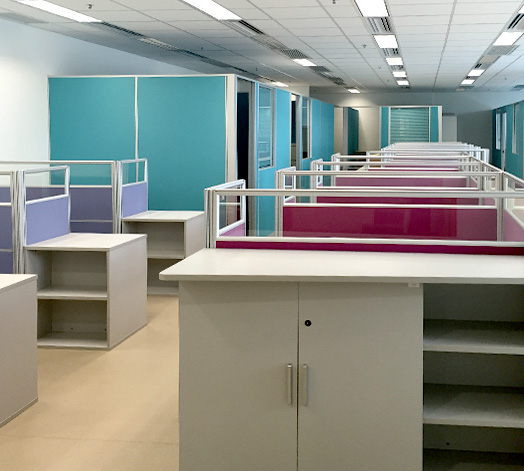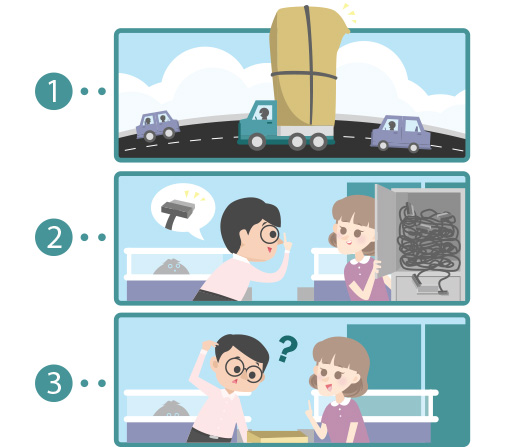
Second Hand, First Choice—The perks of reusing office furniture
Moving into a new office opens up many exciting opportunities, but sourcing sustainable furniture and equipment is not always one that new tenants jump at. Filling one’s office with slick, brand-name eco-furniture and futuristic green technology sounds like the exclusive privilege of seven-figure-plus companies, but in practice, offices on a budget can help the Earth too by embracing second-hand items. This may be the best stewardship of Earth’s resources as used items require no additional resources to manufacture, are available locally (cutting down on transportation) and ease the load on the landfill. Also, while the glues and varnishes of new furniture can sicken office occupants by ‘offgassing’ (releasing into the air) volatile organic compounds and toxic gases, second-hand furniture has already finished offgassing so it doesn’t have this problem.
As members of the campus-wide ‘Green Office Programme (GO!)’, all CUHK offices are required to notify other offices (preferably via ITSC mass mail) whenever they have unwanted furniture available for giveaway. Given the logistics involved in simply collecting and reusing one piece of furniture, can an entire office be outfitted with items from these sporadic giveaways in a cost-saving manner? CUHK Jockey Club Institute of Ageing, which moved into their new office of 210 m2 on 6/F, Yasumoto International Academic Park in May 2016, may have the answer.
The Institute estimates that around 80–90% of their furniture and equipment is second-hand. Director Prof. Jean Woo shared the Institute’s rationale: ‘Moving into a new space offers us a unique opportunity to collect and reuse various resources that would have been wasted otherwise, and it is our imperative to support the University’s commitment to waste reduction and sustaining the environment. Furnishing our office with second-hand furniture also enables us to establish a new, functional office with minimal cost and free up funds for other uses.’ To date, the Institute has amassed around 130 pieces of used furniture (mostly desks, partitions and pedestals) and over 400 pieces of used equipment (mostly desktop computers and accessories), a truly impressive feat.
The Institute’s commitment is reflected through its proactive sourcing: while most offices in need of second-hand items check the weekly internal mass mails for donors, the Institute had posted notices in the mass mail detailing items it needed, and received favourable responses; they also liaised with the Information Technology Services Centre (ITSC) to find offices that were planning to write-off their computers.


Mr. Richard Lee, the Institute’s Functional Manager, said support from other CUHK offices has been indispensable in the green initiative: ‘The Campus Development Office (CDO) designed and supervised the outfitting of our new office. Not only did they help us reach offices with unwanted furniture available due to relocation, they came up with a sustainable plan for setting up our items. The salvaged cubicles, for example, came in various colours and models and could have been a visual disaster if put together randomly, yet the CDO project manager, Mr. Simon Lee, and his team managed to create an organized and professional setting with them.’
Richard also expressed his gratitude to ITSC for giving out useful tips for testing second-hand computers to make sure they are reliable. ‘As you know, there’s nothing more aggravating than having your PC die on you after all your work has been saved in it, and that hasn’t happened to us so far thanks to the testing. Colleagues in Academic Building 1 have been a big help too as they provided storage space for the second-hand furniture we acquired until our office was ready for move-in.’
Yet ultimately, success hinges on support from the users themselves: ‘Some people have a stigma against pre-used items, but our colleagues are willing to accept the office as it is. It makes all the work put in worthwhile.’ said Richard.
The Institute’s office is open-plan, and so is more flexible in terms of the types of furniture that can be accommodated. For aspiring second-hand item salvagers, Richard has some additional tips to share:
-
Minimize transportation costs by scheduling as many collections at various sites in one day as far as possible.
-
Be specific when asking other offices for what you need, even if it’s something of low value like a computer cable—you’d be surprised how often something with the exact specifications turns up in some office’s storage cabinet! Not only does it save money, we actually save manpower as finding a supplier for the item can be even more time-consuming.
- Don’t be afraid to ask donors for details of items you are interested in so you can avoid picking up the wrong thing.



